LED/FR4/ALCCL PCB Manufacture Machine
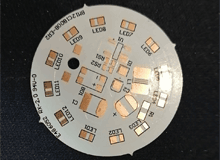
In the single-sided LED manufacturing industry, various machines are used for different stages of production.These machines are essential in the single-sided LED manufacturing industry, enabling efficient and precise production processes, ensuring high-quality products, and meeting the demands of the LED lighting market.
Key Machine Applications in LED Manufacturing
- Cutting Machines : Cutting machines are used to cut the single-sided LED boards to the desired size and shape. These machines can handle different materials like aluminum or FR4 substrates and provide precise and clean cuts.
- Brushing Machines : Brushing machines are used to clean the surfaces of the single-sided LED boards. These machines employ brushes or abrasive pads to remove any contaminants, oxidation, or residues, ensuring a clean and smooth surface for further processing.
- Etching Machines: Etching machines are used to remove unwanted copper from the single-sided LED boards during the circuitry creation process. These machines utilize chemical etchants to selectively dissolve the copper, leaving behind the desired circuit pattern.
- Solder Mask Printing Machines: Solder mask printing machines are used to apply a solder mask layer to the single-sided LED boards. These machines use a stencil or screen printing technique to deposit the solder mask material onto the board's surface, protecting the copper traces and pads during soldering.
- Drying Machines: Drying machines are used to remove moisture from the single-sided LED boards after wet processes or cleaning. These machines employ heat, forced air, or vacuum techniques to accelerate the drying process and ensure the boards are ready for subsequent manufacturing steps.
- Drilling and Routing Machines: Drilling and routing machines are used to create holes and cutouts on the single-sided LED boards. These machines can accurately drill holes for component mounting or routing paths for circuitry, ensuring precise and reliable connections.
- V-Cut Machines: V-cut machines are used to create V-grooves or scoring lines on the single-sided LED boards for easy bending and folding. These grooves allow the boards to be easily folded into the desired shape, such as L-shape or U-shape, facilitating the assembly process.
Double side PCB Manufacture Machines
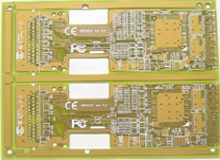
Machine applications play a crucial role in the double-sided PCB (Printed Circuit Board) manufacturing industry.
Key Machine Applications in Double Side PCB Manufacturing:
- Drilling Machines : PCB drilling machines are used to create holes in the circuit boards for component mounting. These machines employ high-speed rotating drill bits to accurately drill holes of different sizes and depths.
- Imaging and Exposure Systems: Imaging and exposure systems use advanced technologies such as photolithography to transfer the circuit design onto the PCB substrate. They expose the photoresist coating on the board to UV light, ensuring precise reproduction of the circuit pattern.
- Etching Machines: Etching machines are used to remove unwanted copper from the PCB surface through a chemical process. They apply etchants such as ferric chloride or ammonium persulfate to dissolve the exposed copper, leaving behind the desired circuit pattern.
- Plating Systems: Plating systems are used for the deposition of copper or other conductive metals onto the PCB surface. They ensure uniform metal plating on the exposed areas of the circuit, enhancing conductivity and protecting the copper traces.
- Drying Machines: Drying machines are used to remove moisture from the single-sided LED boards after wet processes or cleaning. These machines employ heat, forced air, or vacuum techniques to accelerate the drying process and ensure the boards are ready for subsequent manufacturing steps.
- Solder Mask Application Machines: Solder mask application machines apply a protective layer of solder mask over the PCB surface, excluding the areas where components are mounted. This layer protects the copper traces from oxidation and provides electrical insulation.
- V-Cut Machines: V-cut machines are used to create V-grooves or scoring lines on the single-sided LED boards for easy bending and folding. These grooves allow the boards to be easily folded into the desired shape, such as L-shape or U-shape, facilitating the assembly process.
PCB/DPC/MCPCB Prototype manufacture Machines
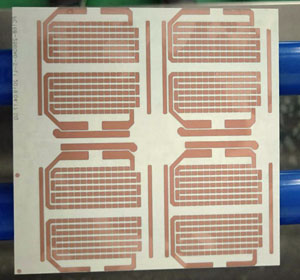
Wet process machines for PCB prototype manufacture and small lot production, enabling precise and controlled chemical processes for creating the desired circuit patterns and surface finishes. They provide efficiency, repeatability, and scalability, allowing for the production of high-quality PCBs in various volumes.
Key Machine Applications in Prototype PCB Manufacturing:
- Developing Machines: Developing machines are used in the process of developing the photoresist pattern on the PCB. These machines immerse the PCB in a developer solution, which selectively removes the exposed photoresist, revealing the underlying copper traces or pads.
- Etching Machines: Etching machines are used to selectively remove copper from the PCB surface, creating the desired circuit pattern. These machines utilize chemical etchants, such as ferric chloride or ammonium persulfate, to etch away the unwanted copper. The PCB is typically immersed or sprayed with the etchant solution in controlled conditions to achieve precise etching.
- Stripping Machines: Stripping machines are used to remove the remaining photoresist after the etching process. These machines employ chemical stripping agents to dissolve and lift off the photoresist layer, leaving behind the desired copper traces and pads on the PCB.
- Plating Systems: Plating systems are used for the deposition of copper or other conductive metals onto the PCB surface. They ensure uniform metal plating on the exposed areas of the circuit, enhancing conductivity and protecting the copper traces.
- Drying Machines: Drying machines are used to remove moisture from the single-sided LED boards after wet processes or cleaning. These machines employ heat, forced air, or vacuum techniques to accelerate the drying process and ensure the boards are ready for subsequent manufacturing steps.
precision metal chemical milling Machines

Precision metal chemical milling is a specialized machining process used to selectively remove material from metal parts using chemical etchants. This process can achieve high levels of accuracy and precision, making it suitable for various applications in industries such as aerospace, automotive, electronics, and medical.mostly used for SST Filter Mesh Chemical Milling , parts for micromechanics and electronics,parts for fuel cells, special series of valuable objects, parts for pens and clocks, pieces for railway or motoring modelism, modern art objects,jewelry, metallic labels, etc…
Key Machine Applications of precision metal chemical milling:
- Aerospace components: Chemical milling is widely used in the aerospace industry to manufacture complex and lightweight components such as aircraft skins, engine parts, and structural components. The process allows for the removal of excess material without compromising the structural integrity of the parts.
- Electronic enclosures: Precision metal chemical milling is used to fabricate intricate and precise electronic enclosures, such as computer chassis, smartphone cases, and other electronic device housings. The process can create intricate patterns, holes, and cutouts required for proper ventilation and component placement.
- Heat exchangers: Chemical milling is employed in the production of heat exchangers used in various industries, including automotive, HVAC, and power generation. The process can create complex internal passages and fins for efficient heat transfer.
- Medical implants: Precision metal chemical milling is utilized in the manufacturing of medical implants, such as orthopedic implants and dental prosthetics. The process allows for the production of intricate and customized shapes with high precision, ensuring a proper fit and functionality.
- Microelectromechanical systems (MEMS): Chemical milling is commonly used in the fabrication of MEMS devices, which are miniaturized systems that combine mechanical and electrical components. The process enables the creation of precise microstructures and features required for MEMS devices, such as sensors, actuators, and microfluidic channels.
Flexible cutting die etching Machines
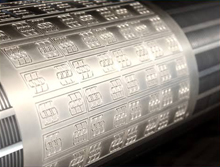
Flexible cutting die etching is a process used to create intricate and precise cutting dies for various applications. The etching process allows for the removal of material from a flexible metal sheet, creating a custom-designed cutting die with sharp edges and precise contours. Here are some machine applications of flexible cutting die etching:
Key Machine Applications of cutting die etching:
- Packaging industry: Flexible cutting dies are widely used in the packaging industry to create custom-shaped packaging designs. The etched cutting dies can be used to cut and crease materials such as cardboard, paperboard, and corrugated board, enabling the production of unique and attractive packaging solutions.
- Label and sticker production: Flexible cutting dies are essential in the production of labels and stickers. The etched dies can accurately cut through adhesive-backed materials, creating intricate shapes and designs for labels and stickers used in various industries, including food and beverage, cosmetics, and pharmaceuticals.
- Die-cutting of gaskets and seals: Flexible cutting dies are used in the production of gaskets and seals for industrial applications. The etched cutting dies can accurately cut through materials such as rubber, foam, and gasket materials, creating custom shapes and sizes required for sealing applications in automotive, aerospace, and other industries.
- Medical device manufacturing: Flexible cutting dies are utilized in the production of medical devices that require precise cutting and shaping. The etched dies can be used to cut materials such as medical-grade plastics, foams, and adhesives, enabling the production of components for medical devices such as wound dressings, surgical drapes, and adhesive patches.
- Process flow: exposure--developing--etching--CNC engraving--nickel plating
Nameplate & medal sign etching Machines
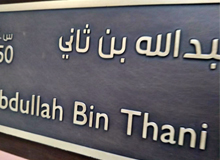
The chemical etching process to make a name plate is similar to chemical milling. The same process flow also applies to: metal decoration plates, nameplates,Metal sign Etching ,tags, stencils gobos,Metal crafts , Stainless steel plaque etching, copper & brass signs etching etc .
Key Machine Applications of etching machines for nameplate and medal etching:
- High-precision etching: Etching machines can achieve very fine and precise pattern and text etching, enhancing the appearance of nameplates and medals with higher levels of elegance and professionalism.
- Strong customization capability: Etching machines can be customized according to customer requirements, personalized designs such as texts, logos, and patterns, catering to the diverse needs of different customers.
- High production efficiency: machine features automated operations, allowing for quick completion of the etching process, thus improving production efficiency and suitable for large-scale production.
- Excellent durability: Since etching is performed on the metal surface, the etched parts exhibit good, being resistant to fading or wear and maintaining a good appearance over an extended period.
Press plate etching Machines

stainless steel press plate etching is a process used in various industries for the production of high-quality and customized press plates. The application of press plate etching includes:
Key Machine Applications of etching machines for press plate etching:
- Packaging Industry: Press plates are used in the packaging industry to create decorative elements and textures on packaging materials like boxes, cartons, and labels. .
- Textile Industry: Press plates find application in the textile industry for the production of embossed and textured fabrics.
- Woodworking Industry: Press plates are used in the woodworking industry for creating decorative elements on wooden surfaces.
- Automotive Industry: Press plates find application in the automotive industry for the production of decorative elements on car interiors, such as dashboard panels, door panels, and trim pieces.
Hot stamping dies etching Machines

The Hot stamping foil die(zinc stampie die ,magnesium stamping die,Copper stamping die ) etching process typically involves three main steps: exposure, developing, and etching. Here is a breakdown of each step:
Key Machine Applications of etching machines for stamping die:
- Exposure: In this step, a photosensitive resist material is applied onto the surface of the hot stamping die material(copper,zinc,magnesium). The resist material is typically a light-sensitive polymer or photoresist. A film or mask with the desired design or pattern is placed over the resist-coated die surface. The die is then exposed to UV light, which passes through the transparent areas of the film or mask, curing the resist material beneath it. The areas covered by the design on the film or mask remain uncured.
- Developing: After exposure, the die is immersed in a developing solution. The developing solution removes the uncured resist material, leaving behind the cured resist in the desired design or pattern. The developing process reveals the areas of the die surface that will be etched.
- Etching: Once the desired design has been developed, the die is ready for etching. Etching is a chemical process that selectively removes the exposed metal areas of the die surface. The die is immersed in an etching solution, which dissolves the exposed metal, creating recessed areas corresponding to the design. The etching process is carefully controlled to ensure the desired depth and accuracy of the etched design.
Decoration Plate etching Machines

stainless steel sheet etching,aluminium sheet etching,Elevator decoration plate,Curtain wall decoration,wall art decoration,Theses etching decoration plate process typically involves several steps, including silk screen printing, UV drying, and etching rinse stripping. Here is a breakdown of each step:
Key Machine Applications of etching machines for big size sheet:
- Exposure: In this step, a photosensitive resist material is applied onto the surface of the hot stamping die material(copper,zinc,magnesium). The resist material is typically a light-sensitive polymer or photoresist. A film or mask with the desired design or pattern is placed over the resist-coated die surface. The die is then exposed to UV light, which passes through the transparent areas of the film or mask, curing the resist material beneath it. The areas covered by the design on the film or mask remain uncured.
- Developing: After exposure, the die is immersed in a developing solution. The developing solution removes the uncured resist material, leaving behind the cured resist in the desired design or pattern. The developing process reveals the areas of the die surface that will be etched.
- Etching Rinse Stripping: Etching is a chemical process that removes the unprotected areas of the plate, leaving behind the desired design. Before etching, any remaining resist material or photoresist from the silk screen printing needs to be removed. This is done through etching rinse stripping, where a chemical stripping solution is applied to the plate to dissolve and remove the resist material. The plate is then rinsed to ensure all traces of the resist material are removed.
Special function etching machine customization
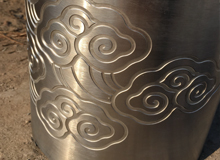
We can customize equipment for some special products, such as irregular shapes, or oversized ones, or some special requirements.
customization process:
- Requirement Analysis: We will discuss your specific requirements, including the desired etching function, materials to be etched, etching precision, throughput, and any other specific features you need.
- Design Proposal: Based on the analysis, we will provide you with a design proposal that outlines the machine’s specifications, including the etching method, size, power, control system, and any additional features required.
- Engineering and Manufacturing: Once the design proposal is approved, our engineering team will start the manufacturing process. We will source the necessary components, fabricate the machine, and assemble it according to the customer's requirement .
- Installation training: We can provide door-to-door installation of equipment, as well as technical guidance, and provide training for customers to complete production trials.
